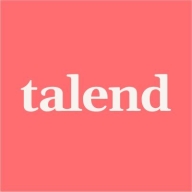

Pentaho Data Integration and Talend Open Studio are competitors in the data integration and analytics category. Pentaho appears to have the upper hand due to its user-friendly development interface and strong integration with big data technologies, making it better suited for scalability and big data processing.
Features: Pentaho Data Integration offers ease of use, support for multiple databases and file types, and comprehensive data transformation capabilities with a drag-and-drop interface that supports a wide range of data sources. Talend Open Studio is praised for its extensive integration capabilities, support for advanced tasks, and a strong community for technical support and additional features.
Room for Improvement: Pentaho Data Integration could improve debugging, scheduling tools, and support for cloud-native integrations. Users have noted issues with backward compatibility and the need for more robust data profiling capabilities. Talend Open Studio could enhance its user interface and cloud deployment support. Better documentation and integrated version control and scheduling features are desired by users.
Ease of Deployment and Customer Service: Pentaho Data Integration is available on-premises, public, and hybrid clouds, but vendor support can be slow. Talend Open Studio offers similar deployment flexibility, and its customer service is rated higher with a responsive and helpful support network enhanced by an active community.
Pricing and ROI: Pentaho Data Integration's community edition is free, offering good ROI with saved development time and better resource management. The enterprise edition is available for a subscription fee. Talend Open Studio provides a free edition for small businesses and scalable solutions with its licensed version, offering cost-effective ETL functionalities, although costs can rise for large-scale deployments.
| Product | Market Share (%) |
|---|---|
| Talend Open Studio | 3.2% |
| Pentaho Data Integration and Analytics | 1.7% |
| Other | 95.1% |


| Company Size | Count |
|---|---|
| Small Business | 17 |
| Midsize Enterprise | 16 |
| Large Enterprise | 25 |
| Company Size | Count |
|---|---|
| Small Business | 22 |
| Midsize Enterprise | 13 |
| Large Enterprise | 18 |
Pentaho Data Integration stands as a versatile platform designed to cater to the data integration and analytics needs of organizations, regardless of their size. This powerful solution is the go-to choice for businesses seeking to seamlessly integrate data from diverse sources, including databases, files, and applications. Pentaho Data Integration facilitates the essential tasks of cleaning and transforming data, ensuring it's primed for meaningful analysis. With a wide array of tools for data mining, machine learning, and statistical analysis, Pentaho Data Integration empowers organizations to glean valuable insights from their data. What sets Pentaho Data Integration apart is its maturity and a vibrant community of users and developers, making it a reliable and cost-effective option. Pentaho Data Integration offers a range of features, including a comprehensive ETL toolkit, data cleaning and transformation capabilities, robust data analysis tools, and seamless deployment options for data integration and analytics solutions, making it a go-to solution for organizations seeking to harness the power of their data.
Talend Open Studio is a free, open source ETL tool for data integration and Big Data. The solution enables you to extract diverse datasets and normalize and transform them into a consistent format which can be loaded into a number of third-party databases and applications.
Talend Open Studio Features
Talend Open Studio has many valuable key features. Some of the most useful ones include:
Talend Open Studio Benefits
There are several benefits to implementing Talend Open Studio. Some of the biggest advantages the solution offers include:
Reviews from Real Users
Below are some reviews and helpful feedback written by PeerSpot users currently using the Talend Open Studio solution.
Elio B., Data Integration Specialist/CTO at Asset messages, says, "The solution has a good balance between automated items and the ability for a developer to integrate and extend what he needs. Other competing tools do not offer the same grade of flexibility when you need to go beyond what is provided by the tool. Talend, on the other hand, allows you to expand very easily."
A Practice Head, Analytics at a tech services company mentions, “The data integration aspect of the solution is excellent. The product's data preparation features are very good. There's very useful data stewardship within the product. From a technical standpoint, the solution itself is pretty good. There are very good pre-built connectors in Talend, which is good for many clients or businesses, as, in most cases, companies are dealing with multiple data sources from multiple technologies. That is where a tool like Talend is extremely helpful.”
Prerna T., Senior System Executive at a tech services company, comments, “The best thing I have found with Talend Open Studio is their major support for the lookups. With Salesforce, when we want to relate our child objects to their parent object, we need to create them via IDs. Then the upsert operation, which will allow you to relate a child object to the event, will have an external ID. That is the best thing which keeps it very sorted. I like that.”
An Implementation Specialist, Individual Contributor at a computer software company, states, “I can connect with different databases such as Oracle Database or SQL Server. It allows you to extract the data from one database to another. I can structure the data by filtering and mapping the fields.” He also adds, “It is very user-friendly. You need to know the basics of SQL development or SQL queries, and you can use this tool.”
PeerSpot user Badrakh V., Information System Architect at Astvision, explains, "The most valuable features are the ETL tools."
We monitor all Data Integration reviews to prevent fraudulent reviews and keep review quality high. We do not post reviews by company employees or direct competitors. We validate each review for authenticity via cross-reference with LinkedIn, and personal follow-up with the reviewer when necessary.